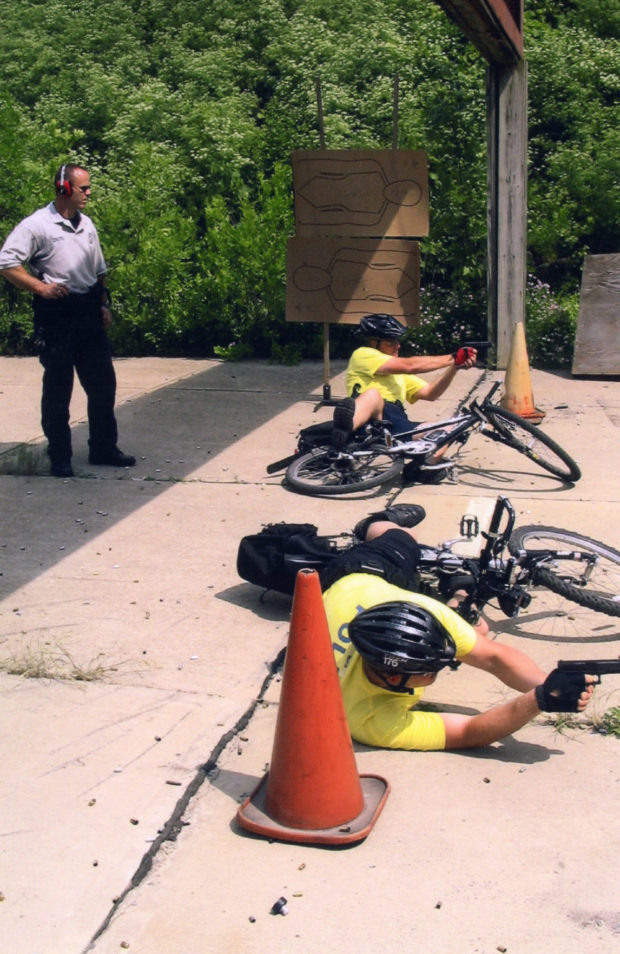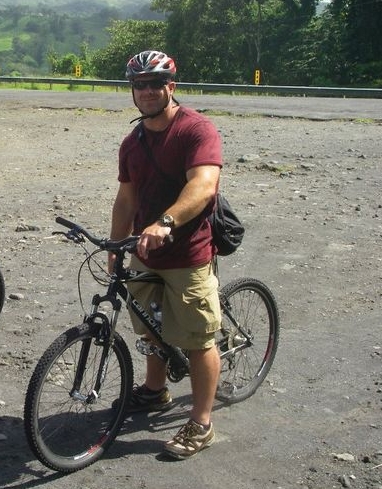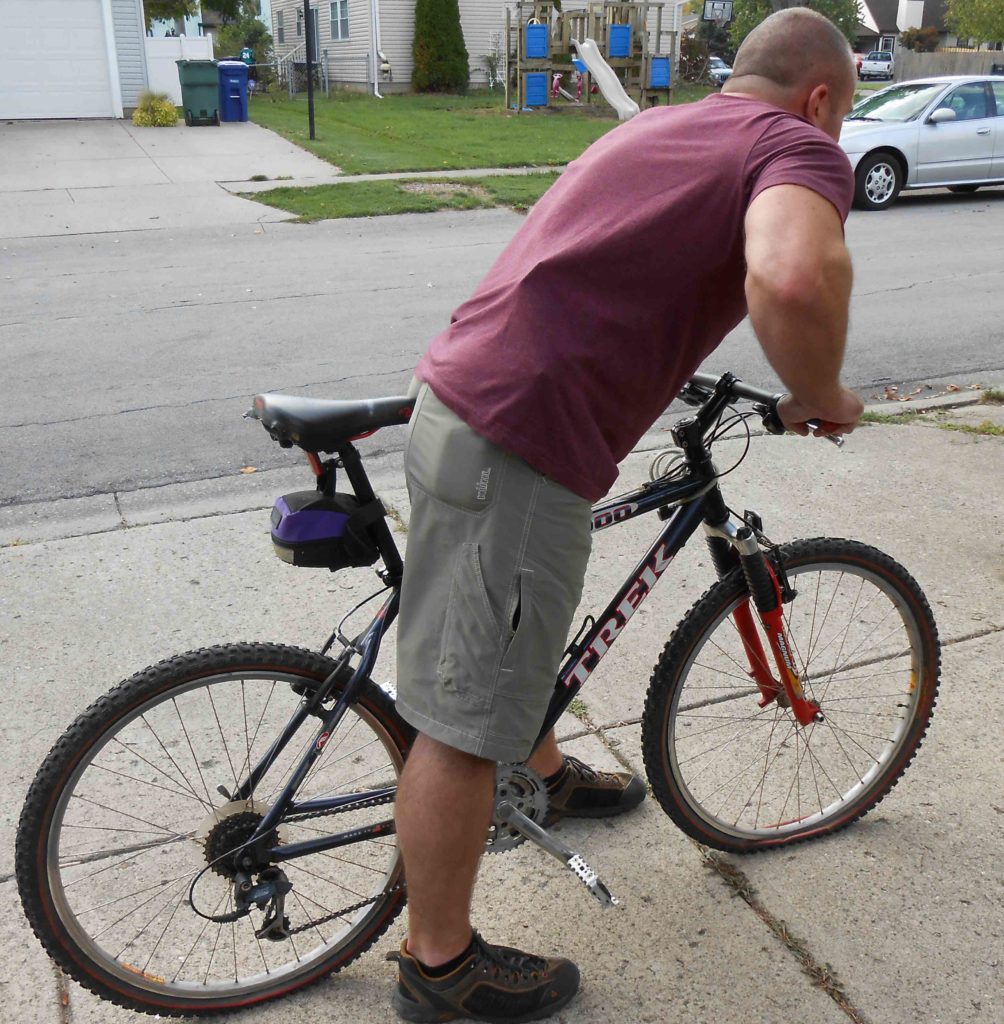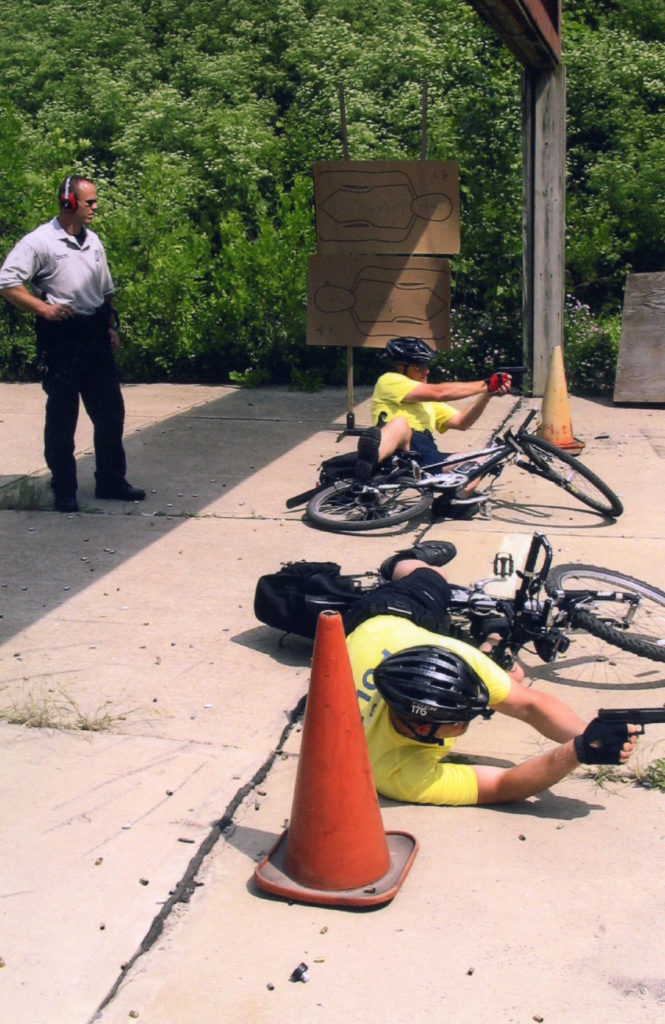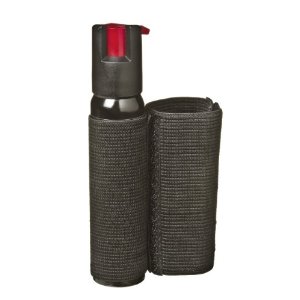Written by Greg Ellifritz
This month’s issue of Concealed Carry Magazine has an article I wrote about self defense tactics for bicyclists. It starts on page 60 at the link below:
https://www.usconcealedcarry.com/wp-content/issues/2013/apr-2013.pdf
Concealed Carry is one of the more reputable gun magazines available. Most of the writers are full time instructors with lots of real world experience. Consider subscribing.
The editor didn’t have room for the photos I took in this particular issue. I think the photos are needed to illustrate some of the points I made. The complete article is copied below with the pictures included. Enjoy!
In my city there have been several recent high profile attacks on bicyclists and people using urban bike paths. In the last two months, we’ve seen rapes, robberies, and assaults all committed against people on bicycles. Your home city might be seeing a similar trend of attacks. Bicycle commuters and recreational cyclists are particularly vulnerable in some areas. Traditional firearms and self defense training doesn’t cover the situations in which cyclists might find themselves. Some specialized awareness and training is necessary.
For the record, I am not a bicycle commuter. I ride mountain bikes recreationally and have served as a bike patrol officer for my police agency. I also taught the firearms and self defense portion of our state’s police cyclist certification class for several years. Although I don’t ride my bike every day, I’m aware of the specialized training that cyclists need.
Even if you don’t use your bike to commute to work, you can still benefit from some of these safety ideas. They can be useful even if you are an occasional cyclist. Some of them may also be useful for your children…who may spend more time on a bike than you do.
1) Traditional holsters don’t work well for concealed carry on a bicycle. If you carry your gun behind the hip (either on the belt or inside the waistband) it will print horribly when you are riding your bike in a forward leaning posture. Appendix carry is generally out because you will be poked in the thigh with the muzzle on every pedal stroke. Ankle holsters are not feasible because they will bang on the frame or sprocket of the bike as you ride.
The weapon will also be exposed to much more moisture than the average concealed carry gun. Whether the moisture comes in the form of rain or sweat, it will wreak havoc on a blued gun’s finish. The gun needs some extra protection.
There’s no easy answer. Shoulder holsters are an option, but I’ve never found them exceptionally comfortable. They also require a cover garment which may be uncomfortably hot while riding.
When I ride, I generally find myself carrying a Glock 26 in a fanny pack. I rotate it to the back of my body (as they were originally intended to be worn) so that it doesn’t get in the way of my pedaling. I realize this isn’t going to be an exceptionally fast draw, but it seems like the best compromise for me.
I’ve also carried a small revolver or .380 automatic in a pocket holster in the thigh cargo pocket of my shorts. If you find the right gun/holster/pocket combination, this option can work well, but it will likely take some intense experimentation. One caution…magazine release buttons on semi-automatic pistols get pushed quite often when cycling. Pocket holsters are notorious for creating this problem. Make sure that your magazine stays in the gun after all types of exertion and movement.
2) Beware of potential ambush sites. Many bike paths travel through densely wooded areas. They often have curves, blind corners, and poorly maintained brush near the trail. Many times thieves, rapists, and robbers use these terrain features to their advantage in order to construct an ambush-style attack.
If I wanted to rob a bike commuter, I would find a place on a bike trail with a blind corner and set up some type of roadblock. A large tree limb, log, or rock can easily be placed in the path. If it is placed shortly after a blind corner, the cyclist may crash into it if he is moving at any speed. Even if the cyclist doesn’t crash, he’ll have to stop and move the obstacle in order to continue. When the biker either crashes or stops to move the obstacle, my buddies and I jump him.
Another option is exploiting any location where the underbrush is close to the path. The robber can hide in the brush and shove a stick into your spokes as you ride by. When you crash, he steals your bike and wallet.
Look for those areas on your route and either avoid them or be extra cautious there. Keep your eyes on the trail ahead. If you see an obstacle, either turn around or quickly dismount. Scan the areas around the obstacle for potential hiding spots and attackers. Access your weapon and be ready to fight if you are attacked.
3) Use caution when riding on roadways. Besides the normal hazards that sharing the road with cars provide, some criminals will use their vehicles to assault bicycle riders to facilitate their crimes. One recent kidnapper in Louisiana saw an attractive young woman riding her bicycle alone at night. He followed the girl in his truck, and when he saw an opportunity, he struck her with the vehicle. After she fell to the ground, the kidnapper approached her with a knife and forced her into the truck. The 19-year old girl fought back vigorously, spraying him with pepper spray and stabbing him with his own knife, but the man drew a gun and killed her.
Be especially aware of anyone who may be following you. Bikes move slower than cars. If a car is intentionally traveling behind you and not attempting to pass, take that as a warning sign. Get off the road and into the grass where a vehicle will have more difficulty following. Having mirrors on your bike or helmet are useful in detecting when a car may be following you.
4) Speed is your friend. Maneuverability and rapid acceleration from a dead stop is not. If you have forewarning of a potential problem, speed up. Don’t slow down. A bicycle moving at full speed is impossible for a running human to catch. If you slow down, you are playing the on the criminal’s turf. A slowly moving bike is less maneuverable and lacks quick acceleration. If you slow to walking pace, you are better off dismounting than trying to quickly accelerate to get away.
5) Use your bike as a barrier, a weapon, or a distraction. If you have to dismount, keep the bicycle between yourself and you potential attackers. If they move to grab you, push the bike into them and either access your weapon or run the opposite way. This technique works surprisingly well at buying yourself a couple of extra seconds in a critical incident.
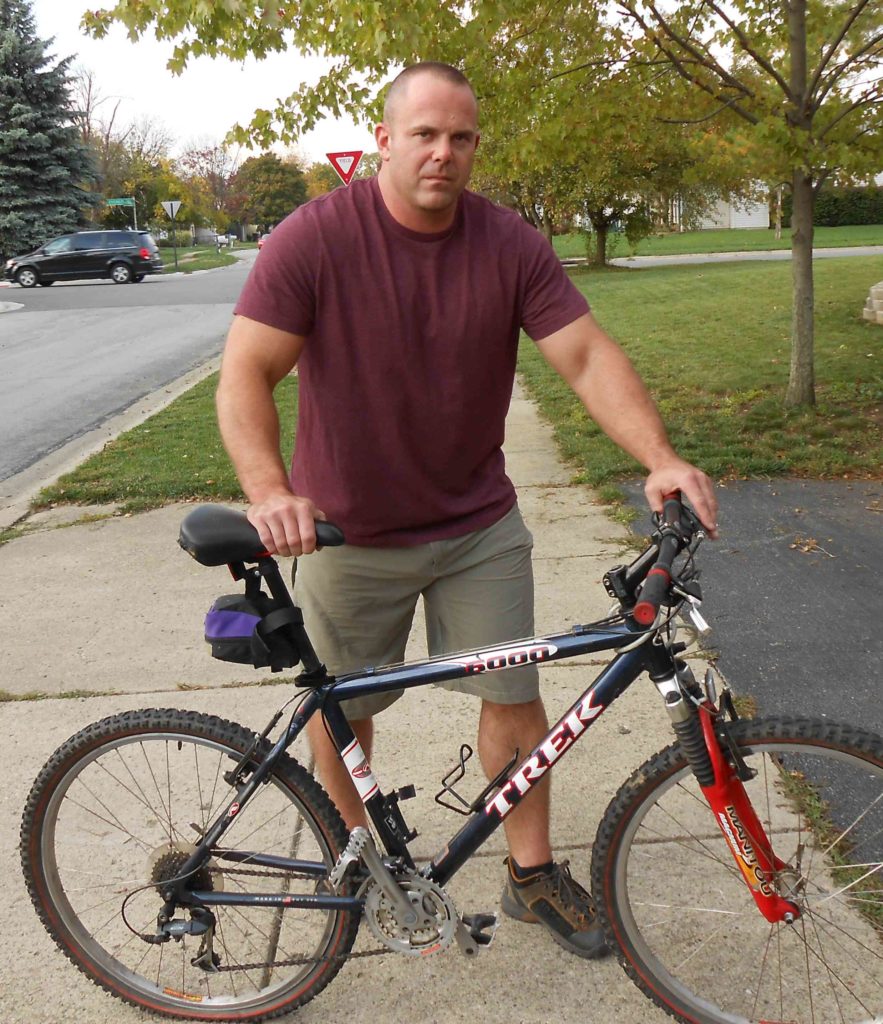
Place the bike between yourself and any potential attackers. Pushing it towards them and running the opposite direction will buy you some additional time.
6) Learn to access your weapon and shoot from the “crash position”. If your luck is anything like mine, you will crash before you have a chance to draw your weapon in a dangerous situation. Can you draw your weapon of choice while laying on the ground in a heap with the bike on top of you? You may have to learn how to do it. Get to your back and push the bike away from you with your feet as you draw. Once the bike is away from your legs, work your way into a standing/fighting position and seek cover.
If you have a range where you can shoot from the crash position, I’d encourage you to do so. If not, work on dryfiring from the position in any private location. An airsoft gun and a few cardboard targets in your back yard may be a good substitute for live fire if you don’t have access to a private outdoor range.
7) Don’t try to stop and draw at the same time. Stop your bike first, THEN draw your weapon. This is primarily for you right handed riders. If you try to draw the gun with your right hand while simultaneously applying the brake with your left, what do you think will happen? You’ll lock up the front brake and go head first over your handlebars. That’s not a good thing in any situation, but it’s really bad when you have a gun in your hand.
This is one of the hardest lessons to teach cyclists who carry guns. They see a threat and are programmed to draw. They draw and end up on the ground and lucky if they don’t shoot themselves in the process. Stop first. Then draw.
8) Consider mounting a weapon to your bike. Even if you carry a gun, having a backup or less lethal weapon makes a lot of sense. Several companies make pepper spray carry holsters that attach to your bike’s frame. I even know one cyclist who uses a tire pump mount to carry an ASP expandable baton. Be creative. I’m sure yo can figure out a way to carry a weapon on the bike. Just make sure that weapon is secured if you have to lock your bike up and leave it in a public location.
9) If you dismount, unbuckle your helmet. A buckled helmet makes it very easy for an attacker to control your movements. The attacker can just grab your helmet and drag your head down. Where the head goes, the body follows. I’ve drug 250 lb bike cops around by their helmets all day in police bike school. When someone grabs your buckled helmet, it’s scary how much control they have over you. Make it a habit to unbuckle your helmet whenever you step off your bike.

If you keep your helmet strap snapped, an attacker can easily control your movements by sticking his fingers into the helmet vents and dragging your head down.
10) Exhaustion will be a factor if you have to fight. I remember responding to an “officer in trouble” call one night when I was on bike patrol. It was a busy 4th of July and our city’s fireworks show was just ending. Traffic was snarled and none of the patrol cruisers could get through it. During this mess, one of my fellow officers was trying to arrest a drunk driver. The drunk driver was fighting back and the officer was in a bad spot. He was calling for help, but none of the cruisers could get to him.
I was about two miles away on my police bike. I rode there as fast as I could and was the first officer to arrive on scene to help. I jumped off my bike and tried to run over to help my friend, but my legs wouldn’t cooperate. I fell down in a heap. I had to crawl over to the fighting drunk, take him to the ground and lay on him until other officers arrived. That’s all I was physically capable of doing. And that was after a short five minute sprint. Imagine how much a long training ride would diminish your ability to fight.
Physically exhausted victims are generally more justified in escalating force during an attack. Realize that after cycling, you may have far less fighting energy than you would have if you were fresh. Plan accordingly. If you can’t control your attacker or escape you should be considering higher levels of force before you become so exhausted that you can’t even access your weapon.
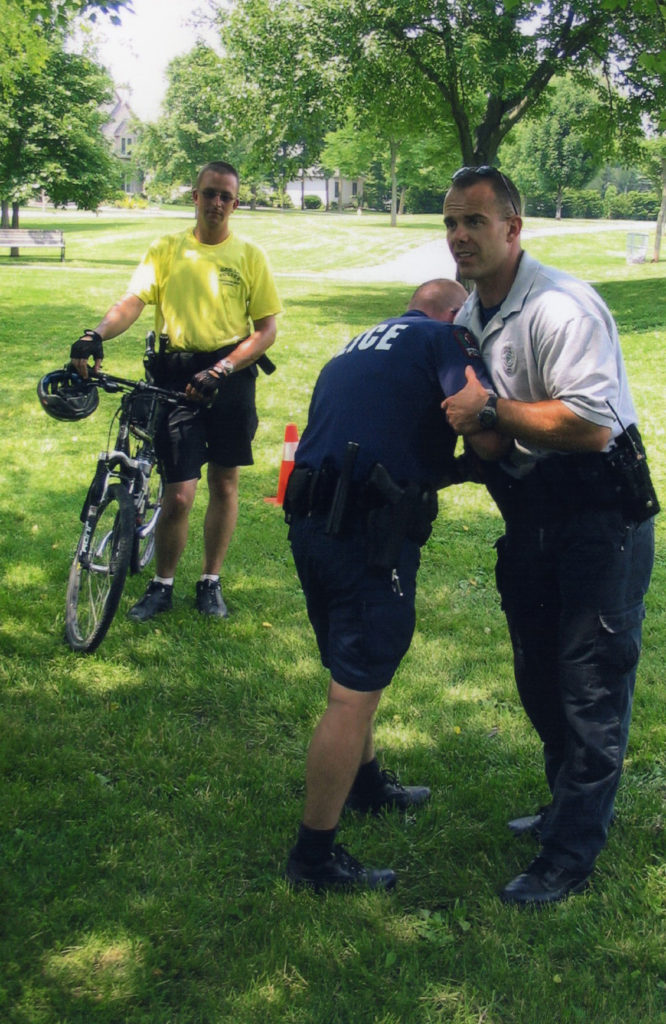
Teaching weapon retention skills to exhausted police bike officers. It’s hard to fight when you start out tired.
If you spend a lot of time on a bike, you owe it to yourself to learn some specific bicycle related defensive skills. Take your bike and your preferred weapon out for a practice session. Keep these tips in mind as you formulate a defensive strategy. I don’t want to see your name in a future news article describing yet another horrific attack on a bicyclist.

